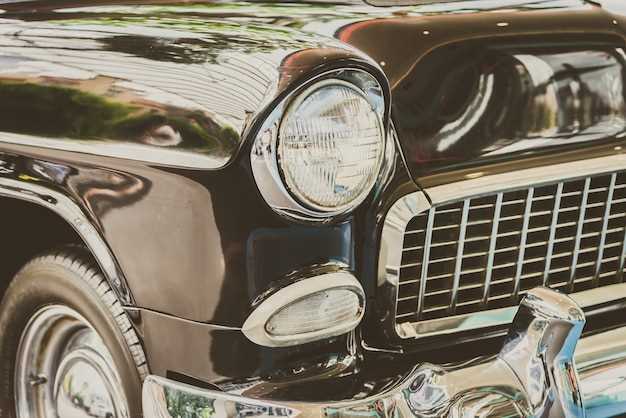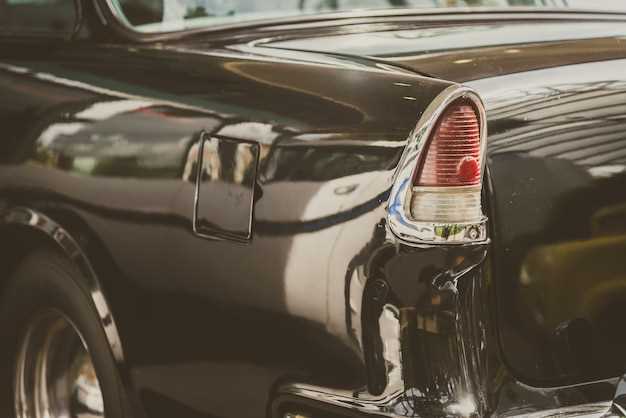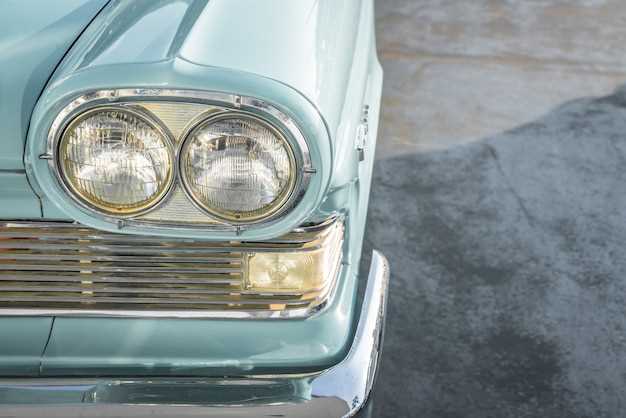
The world of classic cars is not just about automobiles; it’s a journey through time, where each brand carries with it a rich tapestry of history and innovation. These legendary automobiles represent an era of craftsmanship and engineering that has left an indelible mark on the automotive industry. In this article, we will explore some of the most iconic car brands, delving into their origins, achievements, and the lasting impact they have had on enthusiasts and collectors alike.
As we examine these classic car manufacturers, we will uncover fascinating stories of ambition, creativity, and resilience. From the early days of motoring to the present day, these brands have played a crucial role in shaping the landscape of transportation. Their legendary histories reflect the triumphs and challenges faced by their creators, as well as the evolving tastes and desires of car enthusiasts throughout the decades.
Join us on this exciting journey as we celebrate the artistry and legacy of classic car brands, honoring their contributions to the automotive world. Whether you are a passionate collector, a casual admirer, or simply curious about what makes these vehicles so special, this exploration will provide valuable insights into the stories that make these brands truly legendary.
Classic Car Brands and Their Legendary Histories
The realm of classic cars encompasses a rich tapestry of brands that have left an indelible mark on automotive history. One such brand is Ford, whose Model T revolutionized transportation in the early 20th century. This mass-produced vehicle made car ownership accessible to the average American, laying the groundwork for future innovations in manufacturing and design.
Another iconic name is Chevrolet, particularly known for the Corvette, known as America’s sports car. First introduced in 1953, the Corvette combined performance with style, captivating enthusiasts and establishing a legacy that continues to thrive today.
Porsche stands out for its engineering excellence, particularly with the Porsche 911. Launched in 1964, this classic car has become synonymous with performance, agility, and timeless design. Its enduring popularity is a testament to its engineering brilliance and the brand’s commitment to motorsport.
Jaguar, with its elegant designs and powerful engines, contributed significantly to the luxury car market. The Jaguar E-Type, unveiled in the 1960s, became an icon of its era, admired for its beauty and performance. This classic car has since become a symbol of British automotive craftsmanship.
Further enhancing this history is the brand Aston Martin, famed for its association with James Bond films. The Aston Martin DB5, introduced in the 1960s, became legendary not only for its sophisticated style but also for its portrayal of luxury and espionage in popular culture.
Lastly, we cannot overlook the influence of Volkswagen, particularly with its Beetle. Initially conceived in the 1930s, this classic car became a symbol of the counterculture movement in the 1960s, representing simplicity, reliability, and a spirit of freedom.
Each of these classic car brands possesses a storied past that goes beyond mere transportation; they embody innovation, culture, and the evolution of automotive engineering throughout the decades. Their legendary histories continue to inspire collectors, enthusiasts, and new generations of car lovers.
The Rise and Fall of Iconic American Muscle Cars

The American muscle car phenomenon began in the 1960s, driven by a cultural shift towards performance-oriented vehicles. Major car brands such as Ford, Chevrolet, and Dodge capitalized on this trend, releasing models that epitomized power, speed, and aggressive styling.
Some of the most legendary vehicles from this era include:
- Ford Mustang: Launched in 1964, the Mustang became an instant classic, symbolizing freedom and youth culture.
- Chevrolet Camaro: Introduced in 1967 as a direct competitor to the Mustang, the Camaro quickly gained a reputation for its muscular performance.
- Dodge Charger: Known for its bold design and powerful engine options, the Charger became legendary both on the street and in popular culture.
The rise of American muscle cars showcased a unique combination of style and engineering. These vehicles featured large engines, lightweight bodies, and rear-wheel drive layouts, which contributed to their impressive acceleration and handling.
However, several factors precipitated the decline of this iconic segment:
- Fuel Crisis: The oil crisis of the 1970s significantly increased fuel prices, making gas-guzzling muscle cars less appealing to consumers.
- Stringent Emission Regulations: New government regulations targeting emissions and fuel efficiency forced brands to modify or discontinue high-performance models.
- Changing Consumer Preferences: As people began favoring more economical and practical vehicles, the demand for muscle cars decreased.
By the late 1970s and early 1980s, most traditional muscle car brands had either diminished or transitioned to more fuel-efficient models. Despite their decline, the legacy of American muscle cars remains strong, influencing modern automotive design and culture.
In recent years, car brands have attempted to revive the spirit of classic muscle cars. Models like the modern Ford Mustang, Chevrolet Camaro, and Dodge Challenger have emerged, blending retro styling with contemporary performance. This resurgence reflects a continuing fascination with the powerful vehicles that defined a generation.
European Luxury Brands That Shaped Automobile Design

European luxury brands have played a crucial role in shaping the aesthetics and engineering of classic automobiles. Iconic manufacturers such as Rolls-Royce, Bentley, and Mercedes-Benz have not only set high standards for luxury but have also influenced automotive design globally.
Rolls-Royce, founded in 1904, is synonymous with opulence. Its commitment to craftsmanship and attention to detail has made its vehicles a benchmark for luxury. The iconic “Spirit of Ecstasy” mascot embodies elegance, while the distinct grille and custom interior options set the brand apart in the classic car realm.
Bentley’s legacy began in 1919, focusing on performance combined with luxury. The introduction of the Bentley Speed Six in the 1920s demonstrated that sportiness could coexist with comfort. This brand’s relentless pursuit of power without sacrificing elegance continues to inspire modern luxury cars.
Mercedes-Benz has continuously pushed the boundaries of automobile design since its inception in 1886. Known for pioneering safety features and engineering innovations, the brand’s classic models like the 300SL “Gullwing” have become symbols of both performance and style. The fusion of innovative technologies with luxurious finishing makes Mercedes-Benz a cornerstone of automotive heritage.
The combination of craftsmanship and cutting-edge technology from these European luxury brands not only defined their own identities but also influenced countless others in the industry. Their commitment to quality and design excellence has left an indelible mark on automotive history, making them essential to understanding the evolution of classic cars.
The Enduring Appeal of Vintage Japanese Performance Vehicles
Vintage Japanese performance vehicles have carved out a unique and lasting legacy in the automotive world. Brands like Nissan, Toyota, and Honda were not just manufacturers; they became symbols of engineering excellence and innovation. The legendary Nissan Skyline GT-R, for example, transformed the racing scene, establishing a cult following that persists to this day. Its combination of performance, technology, and design set standards that many modern cars still aspire to achieve.
The Toyota 2000GT stands as another icon, being one of the first Japanese sports cars to capture global attention. Its sleek lines and powerful engine challenged perceptions about Japanese engineering, firmly placing the brand on the international stage. Enthusiasts appreciate how such models transcended mere transportation to become embodiments of a cultural movement, reflecting Japan’s rise in the automotive industry during the late 20th century.
Furthermore, Honda’s contribution through models like the NSX showcased the brand’s commitment to performance and precision. With a lightweight chassis and an advanced VTEC engine, the NSX redefined what a supercar could be, competing with European counterparts while maintaining its distinct Japanese character.
The appeal of these vintage vehicles lies not only in their performance but also in their design and the nostalgia they evoke among car collectors and enthusiasts. Restoring a classic Japanese car is often seen as an art form, bringing together mechanical skill and an appreciation for automotive history. This enduring fascination with vintage Japanese performance vehicles continues to underscore their significance within the automotive community, blending nostalgia with an unyielding passion for speed and style.



